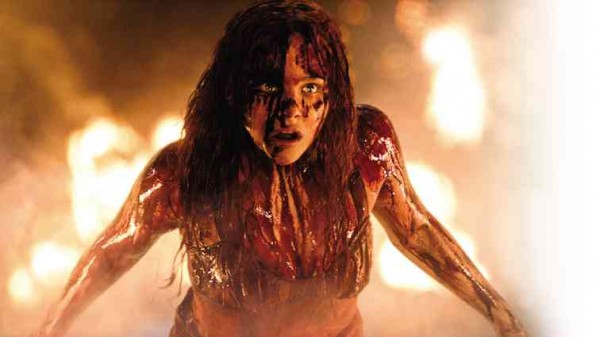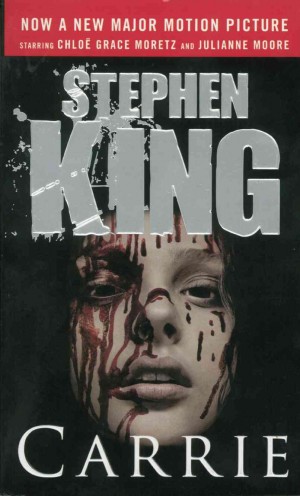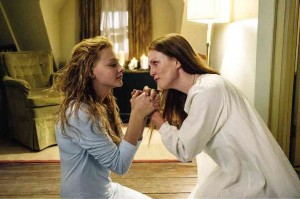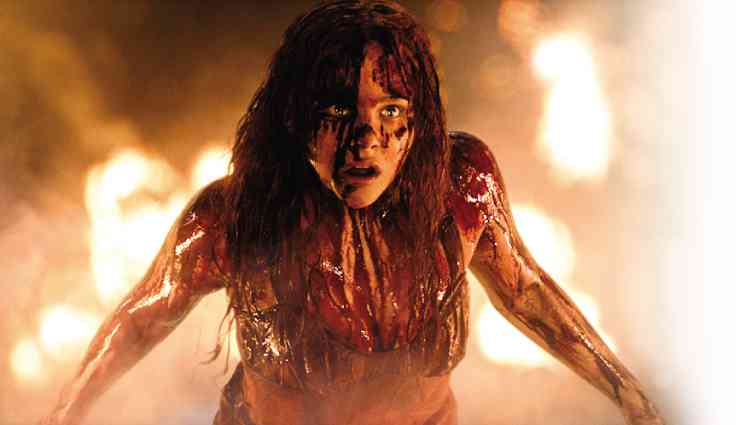

A film adaptation by Brian De Palma in 1976 followed. The movie went on to become a very big hit that redefined the whole horror genre and remains a cult classic.
Four decades later, director Kimberly Pierce (TV’s “The L Word) has thought of putting a contemporary twist to the supernatural horror-drama that promises to be an equally spine-chilling experience.
The story is about Carrie White (played by Chloë Grace Moretz), who’s bullied in school. She lives a sad existence both in school and at home, where her mother, Margaret (Julianne Moore), a fanatically religious person, drives her into isolation and punishes her for every action the latter believes is brought about by the devil.
Carrie continues to be isolated even when she discovers she has telekinesis, the ability to move things telepathically. But she does not know how to handle her power; her fits of rage cause light bulbs to explode and wreak havoc on everything in sight.
But Carrie is suddenly invited by the school jock to be his date in the annual prom. Suddenly she is socially rehabilitated. But unknown to her, some of the school kids are set to play an ugly prank on her on prom night, and when Carrie is victimized, her rage spins dangerously out of control.
In shooting the film, Pierce instantly thought of De Palma’s version of the book.
“I loved De Palma’s version,” she said. “So, out of respect for a friend and a fellow director who had made a classic with this material, I called him and expressed my interest in doing a contemporary version. And he said, ‘You’ve got to do it!’”
She said in the new film she tried to expand each of the characters.
“I think you should always try to give each character as much authenticity as possible and a true motivation that you believe in—especially your villains,” she said.

Pierce also employed more appealing and up-to-date visual effects to make the film life-like.
“It’s exciting as a filmmaker to be able to play with newer and bigger tools, but the key for me is to remain constantly grounded on story and character,” she said.
Novel
In his earlier days, King did blue-collar jobs and submitted short stories to different magazines, which rejected them. Frustrated, he became an alcoholic and threw away the manuscript of a novel. His wife retrieved it and forced him to submit it to publishers.
The novel turned out to be “Carrie.” Finally accepted for publication, it came out in 1973 and earned him $400,000 in paperback rights. Today, it remains one of his most-read and best-loved works.
The slightly circular narrative of the novel opens with a news item about a rather strange incident in the White House where a rain of stones was reported. This sets off the eerie occurrences in the novel, all of which have something to do with Carrie.
The novel was really a first novel. It reads now to be the work of a neophyte. The almost manic use of newspaper clippings to drive the narrative becomes boring and even bothersome to the momentum of the story.
But King was able to let readers feel how Carrie is miserably being held up by her tyrannical mother and her cruel peers. You could see this in the way her mother says her pimples are God’s way of chastising her.
In the end, “Carrie” is about a fairy tale turned horror story. When Carrie discovers the prank, she summons her powers and turns the joke against her tormentors. As King beautifully wrote:
“They were still all beautiful and there was still enchantment and wonder, but she had crossed a line and now the fairy tale was green with corruption and evil.”
Indeed, the novel “Carrie” and its film adaptation by Brian de Palma have remade the coming-of-age genre. After “Carrie,” prom nights have never been the same again.
“Carrie” is available in paperback at National Book Store. The movie, “Carrie,” distributed by Columbia Pictures, opens on Oct. 16, in theaters nationwide.











































